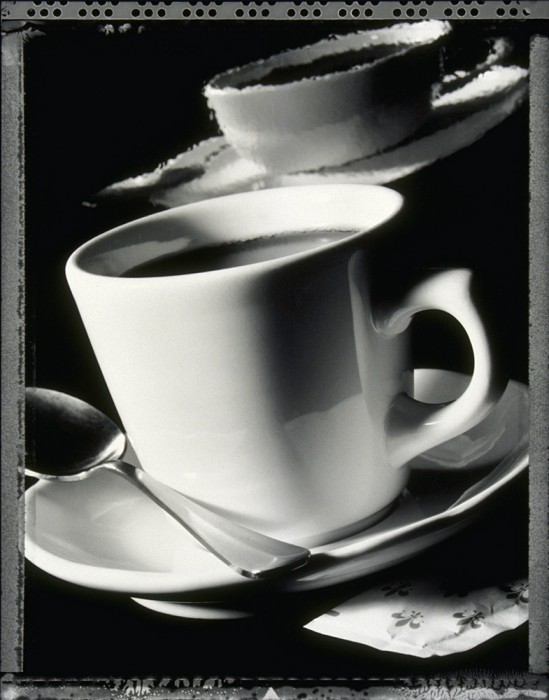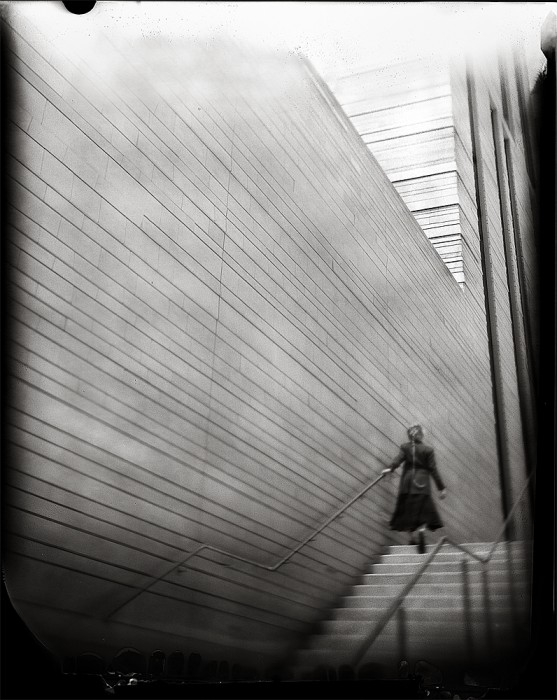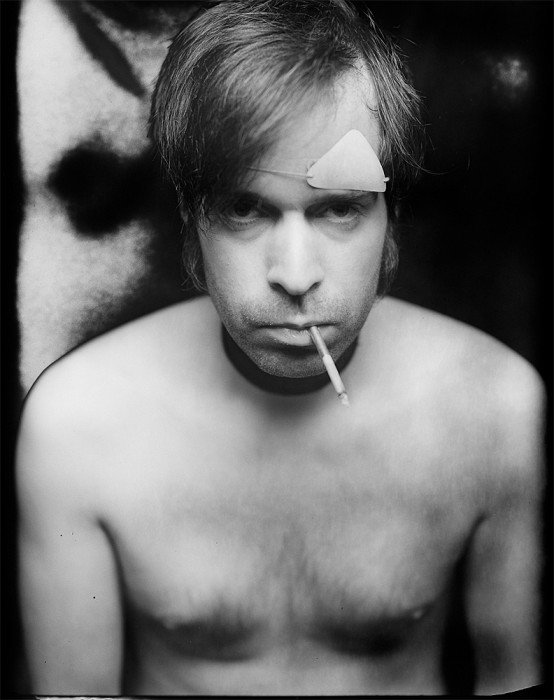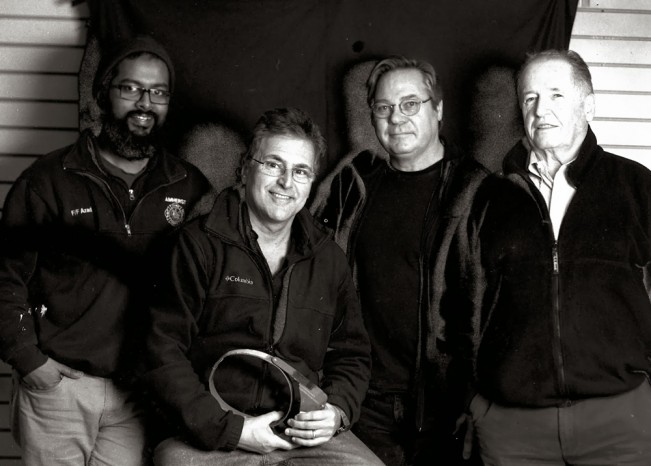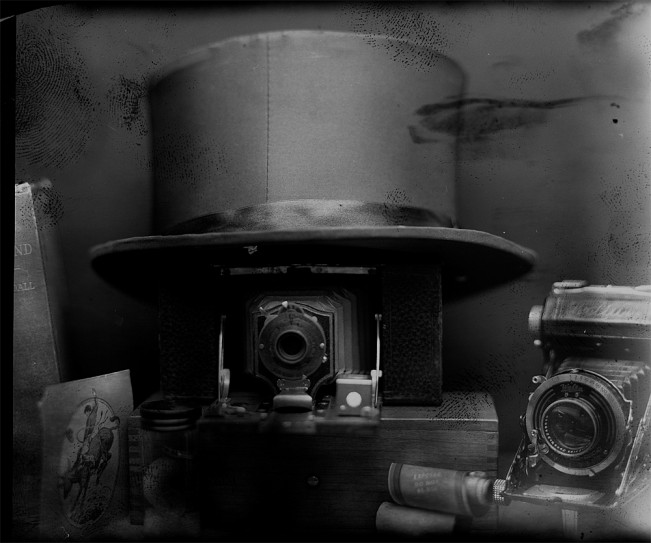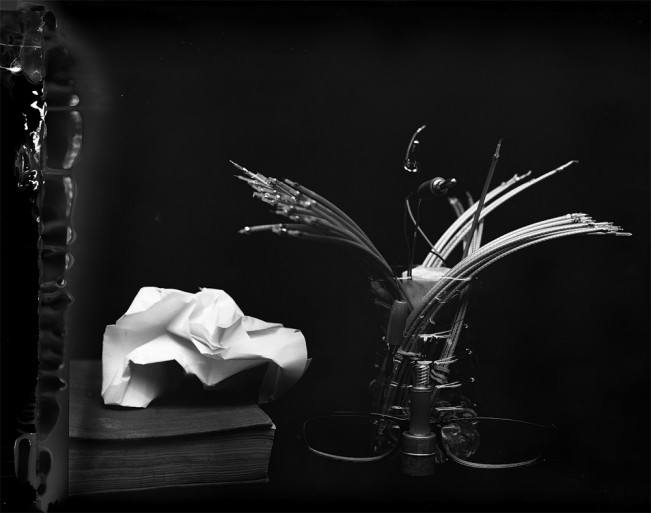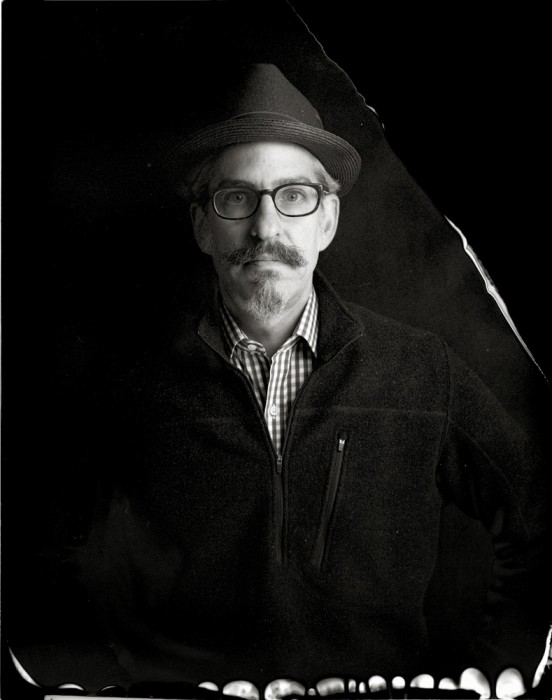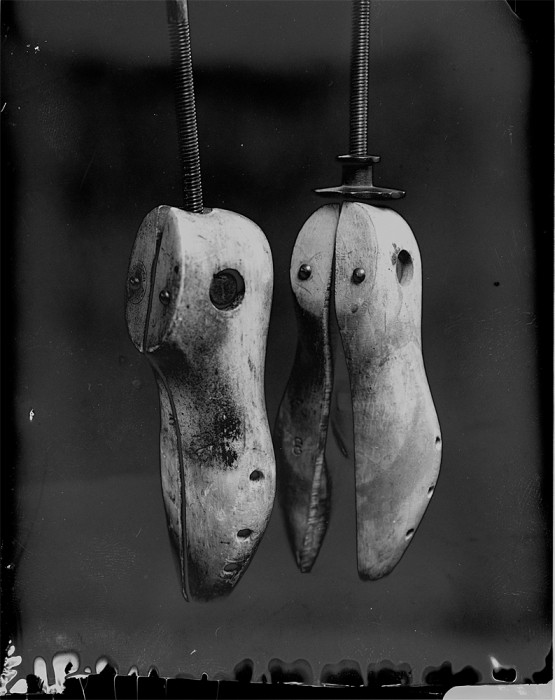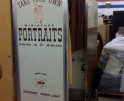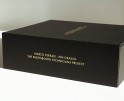Michael Kirchoff on the campaign for New Type 55 Film!
“Anything worth doing is worth doing to excess.” ~ Edwin Land
I am turning today’s post over to my friend Michael Kirchoff. Michael is a large format photographer that has been hoarding Type 55 film since it’s demise and is excited that it will hopefully be available once again….
by Michael Kirchoff
Bob Crowley has big plans, and he’s looking for some serious money to implement those plans. As the inventor for New55 Film, he has just recently launched his Kickstarter campaign for a brand new type of 4×5 format, peel-apart instant film. To many this film is the recreation of Polaroid’s Type 55 black & white positive/negative film of the same format. However, looking closer, this is something quite different…and something very exciting for photographers looking to try their hand at using a new film with an all new set of characteristics and idiosyncrasies. Funds brought in from a successful campaign will be used to purchase materials and assembly machinery, hire staff, and fine tune final testing into a product ready for mass consumption. Seriously though, a new film?!? Who does that anymore…and who would be crazy enough to try?
I first found Bob online, making updates to his blog, new55project.blogspot.com, slightly over three years ago. Things were just getting started and he seemed to be going at it pretty much solo. I reached out to him to mention that what he was doing was an extremely worthwhile endeavor, and that I was behind his efforts 100%. We did a little more corresponding via email, but after a short time all of the other photographic distractions that hit a person took me away from checking in on the progress as often as I did at first, and left him to his own devices. Then, much later I remembered what he had been up to and checked in again. By this time he had done some very extensive research and testing of many materials to achieve his goal. He had also received help from other photographers, as well as members of The Impossible Project and 20×24 Studio. After much collaboration and more testing of prototypes, it seemed that they had the makings of a viable product that produced both a positive black and white print, and a printable negative, much the same way Type 55 did.
Now, you’ll have to pardon me a bit while I geek out over the thought of a new instant film, as my personal history in photography was ignited with this sort of material. I was first introduced to the world of Polaroid as a child by my very forward thinking father and his purchase of the folding SX-70 model camera in the mid 70’s. You know, that flat rectangle with the brown leatherette that popped open to magically form a camera? I was hopelessly addicted to it in my youth. This addiction continued into my professional career with the pro series of Polaroid films, and is still a method of choice for me in creating a great many of my photographs using long expired film. I admit to having a very selfish need to see this film become a success, and you will most definitely find me in the front of the line to get my share. For myself and a great many others, I personally see it as a little of that magic returning to analog photography.
10 Questions from photographer Michael Kirchoff for Bob Crowley, inventor of New55
As an inventor and holder of numerous patents and inventions of a non- photographic nature, what drew you to the idea of re-imagining something like instant film?
I’ve invented quite a few imaging related technologies that produce a picture of a medical condition, or a movie of the inside of a beating heart. Photography and especially instant photography has been an essential tool for me since the beginning. Like many I was sad when I heard that instant 4×5 film was out of production, and I started looking into it, just out of curiosity. What I found was a tale of intrigue, secrets, technical tricks, and plenty of untold history.
It seems like such a daunting prospect to bring a new film type into the world. Were there naysayers in the beginning that thought you crazy to even try?
I was one of them! Even though I have been responsible for many new products, none have been easy to develop and make, all had to be made and sold at a profit to sustain them, and many still depend on a complex infrastructure of materials, suppliers and know-how that you cannot just go out and buy, even if you had the money. So daunting doesn’t begin to describe it. You have to suspend your disbelief and start taking it on part by part. Over time a body of knowledge is developed and relationships are formed, and these are the basis for an actionable business. It helps to avoid too much reverence for the past.
What have been some of your biggest hurdles during the testing process?
Since I have been conducting R&D for a long time, design and testing of new products comes naturally. There is a discipline and a method to it. It takes commitment and time, and money. This is so natural that it’s been easy; it’s what I do. So I would say the only testing hurdles have been what to shoot!
Do you feel you have improved upon instant peel-apart films of the past, or simply brought it back for people to pick up where they left off?
I will let them decide that. At least half of our identified customers never used the Polaroid 4×5 materials. We’ve entered a different age, and the requirements are not at all the same. We can say we reduced the amount of “Polatrash,” certainly; and have improved the artistic potential by establishing Diffusion Transfer Reversal as a high-interest alternative photographic process.
Once you started to make progress with your invention, I noticed that you began to collaborate with people from The Impossible Project and 20×24 Studio. How did that come about and has it worked out for you?
We’ve had lots of help from them and from many others. I was introduced to 20×24 through Elsa Dorfman and over time we did many creative things with the 20×24 crew. Without them we would have had to take a longer and even more difficult course, and even today 20×24 is our closest collaborator. We share a lot of the same interests and John Reuter, Ted McClelland and Nafis Azad have become essential to our successes to date. Then there are those like you who have donated materials which we are thankful.
I have been an avid user of Polaroid Type 55 since the late 80’s for both artistic and commercial purposes. Also, like many, I still have a super secret stash of it under lock and key. Do you think users of New55 will have a similar love for your creation?
I also liked Type 55, but to answer your question, I think some will. A few others still expect that this is a recreation of Type 55 — even after repeated statements to the contrary. New55 is different, and maybe New55 is for a different photographer. But I’m certain some will crave it. Those who are open to new things will.
Once materials and manufacturing are finalized for New55 Film, is there a next step for you that brings back other photographic materials for the analog photographer?
The problem with film and certain other technologies is that they need constant attention to be kept alive and are never quite finalized. They have to swim or sink, and that’s why so many are gone. If we can start up and maintain production through profitable sales — a big “if” — then we might turn our attention to other post-digital sensitive materials such as our right-reading direct positive. But let’s not get ahead of ourselves. We still don’t know if market demand exists for New55, or any film for that matter.
I’ve mentioned what you are accomplishing to a great many people eager to get their hands on it. Once you feel funding for New55 is sufficient, what do think the timeline will be for its manufacture and distribution?
We are hoping that the first New55 products will be in a ready to ship eight months after we are fully funded and organized. That could take longer if more of our emulsion suppliers go out of business like EFKE did, but a year seems to be the usual for most new products in my experience.
New55 is a 4×5 format film. Will there eventually be a medium format pack film and/or 8×10 as well?
The packfilm format was so complex that Polaroid put off investing in the equipment for over a decade, and recently Fuji reported that pack film sales are less than 5% of previous years. Fuji has discontinued packfilm products. So I think we want to skip that. We have tested and shown 8×10 examples and perhaps we might make a few. Nevertheless, you must keep in mind that for every 8×10 camera, there are hundreds of 4×5 cameras — and fewer and fewer darkrooms.
A ridiculous question for many, but who is going to want to use this film? Do you think it will usher in a new breed of film shooters?
Yes, many might think it is ridiculous. But new and interesting photographers arrive daily. But the fact is that the under-35 year-old segment is the fastest growing demographic in photography. And, according to our research, that consists of artists, photographers and creative people who want to explore the post-digital world. It’s great that people are coming into film photography for the first time, and I hope there is enough support — from new or old – for what we are trying to do.
Posts on Lenscratch may not be reproduced without the permission of the Lenscratch staff and the photographer.
Recommended
-
Spotlight on the Photographic Arts Council Los AngelesNovember 23rd, 2025
-
100 Years of the Photobooth: Celebrating Vintage Analog PhotoboothsNovember 12th, 2025
-
100 Years of the Photobooth: The Photobooth Technicians ProjectNovember 11th, 2025
-
100 Years of the Photobooth: Rafael Hortala-Vallve: AUTOFOTONovember 10th, 2025
-
BEYOND THE PHOTOGRAPH: Q&A WITH PHOTO EDITOR JESSIE WENDER, THE NEW YORK TIMESAugust 22nd, 2025

